Above him is a great golden cross set within in an orb of star speckled blue. What is Justinian holding in his mosaic. What does the halo signify in this mosaic from ravenna.
What Does The Halo Signify In This Mosaic From Ravenna, She has a richly attire decorated with jewels. She is crowned with a halo signifying her divinity and her role as co-regent. What does the halo signify in this mosaic from Ravenna. In the chancel mosaic Justinian is posed frontally in the center.
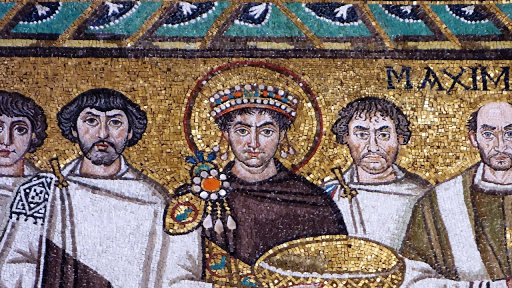
Thats the patron of the building youre standing in. Halo also called nimbus in art radiant circle or disk surrounding the head of a holy person a representation of spiritual character through the symbolism of light. She has a richly attire decorated with jewels. Its emerald green does not just reflect light.
What does the halo signify in this mosaic from Ravenna.
Read another article:
In Revelation 1916 Christ is King of Kings and Lord of Lords Starting in the 4th century a principal way of expressing his kingship in images was to picture him seated on a throne and flanked by saints often Peter and Paul as in this sarcophagus fragment and in the catacombs painting at right. The presence of priests on his left and soldiers on his right indicates his position as leader of both Church and State while his halo gives him the same aspect as Christ in the dome of the apse. One mosaic depicts the Eastern Roman Emperor Justinian I clad in purple and wearing a golden halo flanked by Archbishop Maximianus various court officials and guards. The Western Roman Empire had ceased to exist. To Justinians right appear members of the imperial administration identified by the purple.
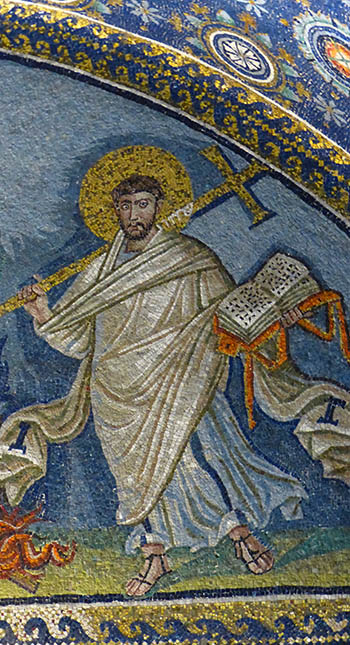 Source: pallasweb.com
Source: pallasweb.com
To this paradise add animals trees birds and a saint. Whos Who in the Mosaic and What They Carry In the chancel mosaic Justinian is posed frontally in the center. He is haloed and wears a crown and a purple imperial robe. What does the halo signify in this mosaic from Ravenna. Christ Pantokrators Of Ravenna Hagia Sophia History.
 Source: bluffton.edu
Source: bluffton.edu
He is flanked by members of the clergy on his left with the most prominent figure the Bishop Maximianus of Ravenna being labelled with an inscription. She is crowned with a halo signifying her divinity and her role as co-regent. In Revelation 1916 Christ is King of Kings and Lord of Lords Starting in the 4th century a principal way of expressing his kingship in images was to picture him seated on a throne and flanked by saints often Peter and Paul as in this sarcophagus fragment and in the catacombs painting at right. He is haloed and wears a crown and a purple imperial robe. Ravenna Art And Architecture.
 Source: pinterest.com
Source: pinterest.com
In Revelation 1916 Christ is King of Kings and Lord of Lords Starting in the 4th century a principal way of expressing his kingship in images was to picture him seated on a throne and flanked by saints often Peter and Paul as in this sarcophagus fragment and in the catacombs painting at right. Its emerald green does not just reflect light. The mosaic in the Apse at San Vitale in Ravenna was made in approximately 547 CE during the early Byzantine period. He is haloed and wears a crown and a purple imperial robe. Empress Theodora Mosaic San Vitale Ravenna Byzantine Empire Byzantine Art Byzantine Mosaic.
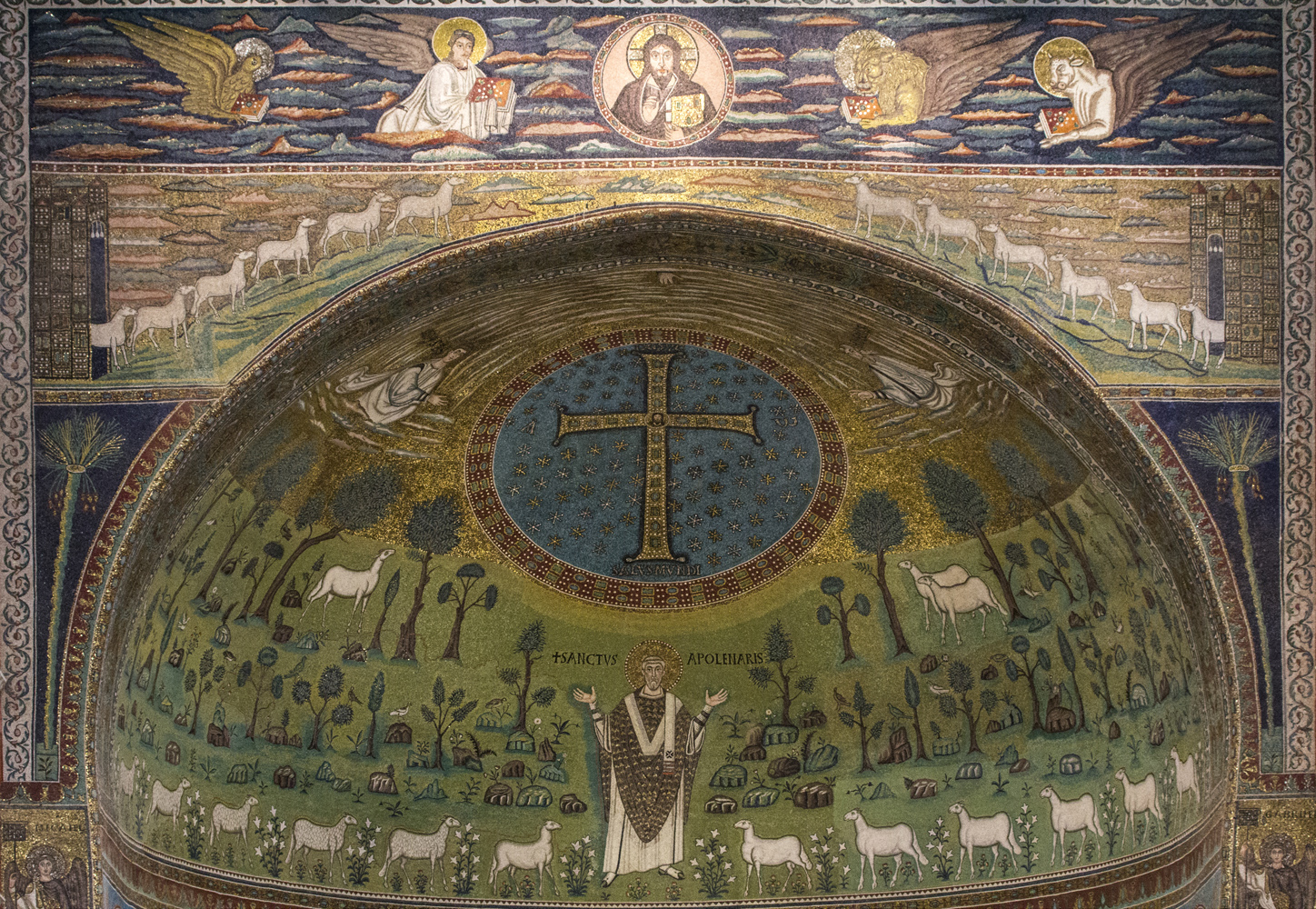 Source: orthodoxartsjournal.org
Source: orthodoxartsjournal.org
Justinian was the Eastern Roman Emperor. She is crowned with a. The clergy and Justinian carry in sequence from right to left a censer the gospel book the cross and the bowl for the bread of the Eucharist. The Western Roman Empire had ceased to exist. The Mosaic Apse Of Sant Apollinaire In Classe Ravenna Orthodox Arts Journal.
 Source: myddoa.com
Source: myddoa.com
The clergy and Justinian carry in sequence from right to left a censer the gospel book the cross and the bowl for the bread of the Eucharist. Several tiny fragments of painted glass with gold shimmer working together to create an image. He is haloed and wears a crown and a purple imperial robe. Thats the patron of the building youre standing in. The Empress Theodora And Retinue At The Basilica Di San Vitale Daily Dose Of Art.
 Source: pinterest.com
Source: pinterest.com
In Revelation 1916 Christ is King of Kings and Lord of Lords Starting in the 4th century a principal way of expressing his kingship in images was to picture him seated on a throne and flanked by saints often Peter and Paul as in this sarcophagus fragment and in the catacombs painting at right. In Orthodox and Byzantine tradition the cruciform also include the letters Ο ὤ Ν which translate to mean The Being or I Am serving as a testament to Christs divinity see more information HERE. Justinians gesture of. The mosaic in the Apse at San Vitale in Ravenna was made in approximately 547 CE during the early Byzantine period. Pin On Eastern Roman Wars.
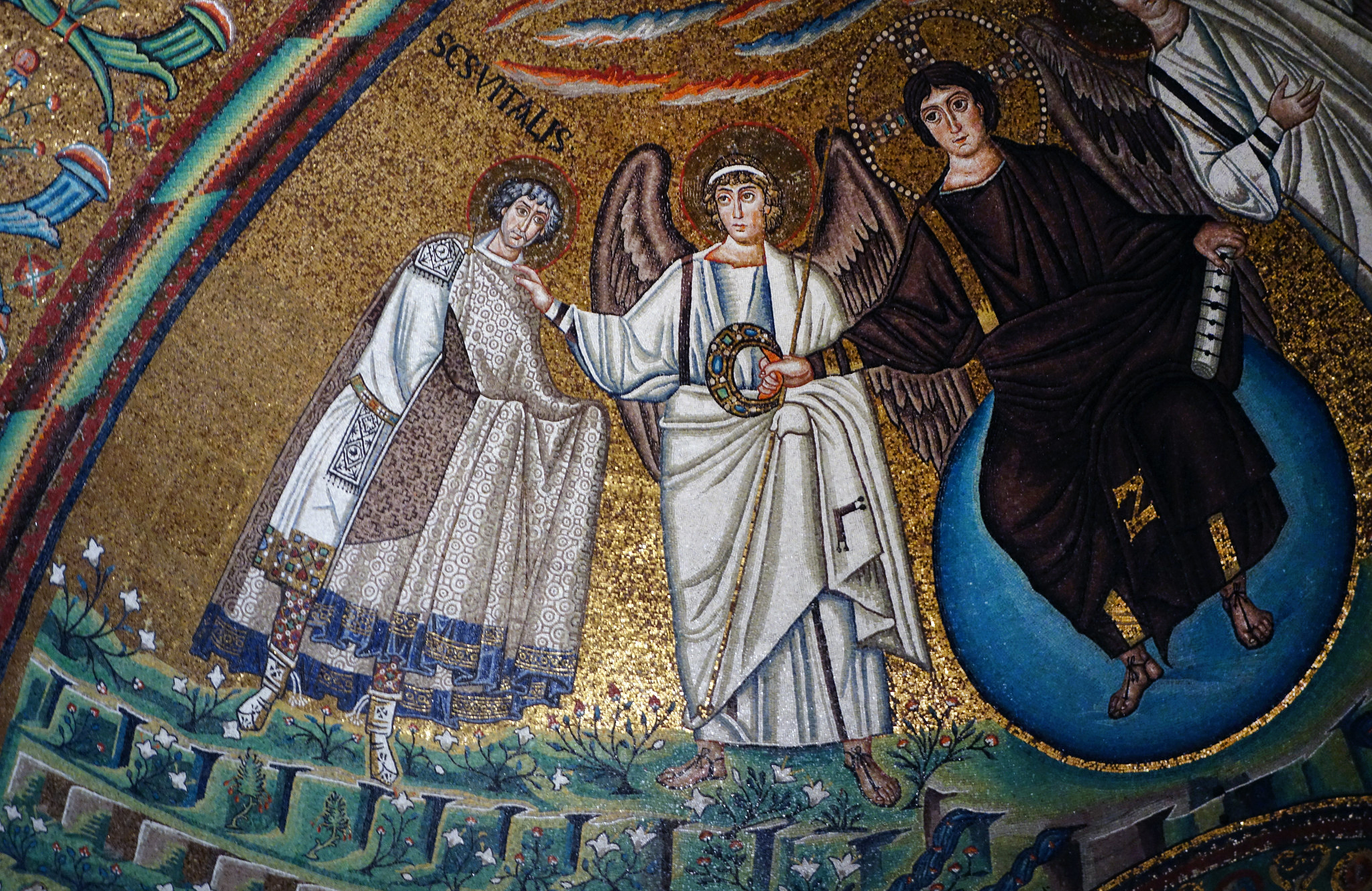 Source: khanacademy.org
Source: khanacademy.org
What does the halo signify in this mosaic from Ravenna. Figure holding a church. The Western Roman Empire had ceased to exist. He is haloed and wears a crown and a purple imperial robe. Justinian Mosaic San Vitale Article Khan Academy.

What does the halo signify in this mosaic from Ravenna. He is flanked by members of the clergy on his left with the most prominent figure the Bishop Maximianus of Ravenna being labelled with an inscription. Its emerald green does not just reflect light. This work of art is a mosaic and is made from tesserae. File Ravenna Mausoleo Di Galla Placidia Mosaic 006 Jpg Wikimedia Commons.
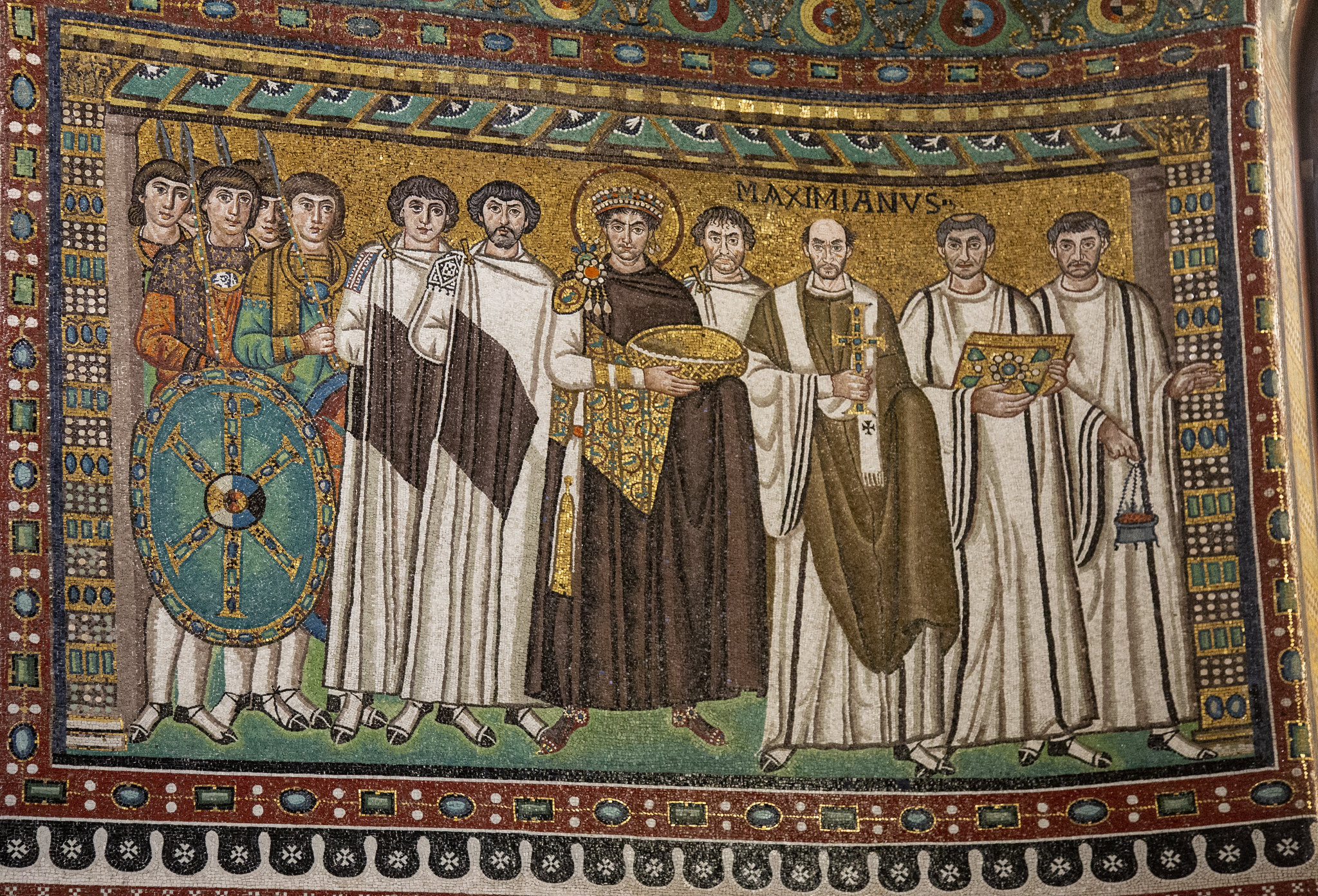 Source: khanacademy.org
Source: khanacademy.org
An early example of the cruciform halo is found in the Miracles of the Loaves and Fishes mosaic of SantApollinare Nuovo Ravenna c. To Justinians right appear members of the imperial administration identified by the purple. The figure will usually be in the corner of a larger. He is flanked by members of the clergy on his left with the most prominent figure the Bishop Maximianus of Ravenna being labelled with an inscription. Justinian Mosaic San Vitale Article Khan Academy.
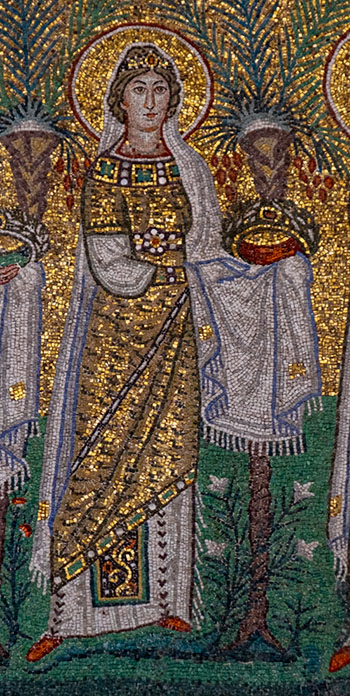 Source: pallasweb.com
Source: pallasweb.com
Whos Who in the Mosaic and What They Carry In the chancel mosaic Justinian is posed frontally in the center. The mosaic in the Apse at San Vitale in Ravenna was made in approximately 547 CE during the early Byzantine period. He is haloed and wears a crown and a purple imperial robe. She is crowned with a halo signifying her divinity and her role as co-regent. Christ Pantokrators Of Ravenna Hagia Sophia History.

Figure holding a church. Theodora and attendants south wall of apse San Vitale Ravenna 526-547 earlymid 6th c 1. He is haloed and wears a crown and a purple imperial robe. Above him is a great golden cross set within in an orb of star speckled blue. San Vitale Ravenna Video Khan Academy.
 Source: pilgrimtothepast.com
Source: pilgrimtothepast.com
He is flanked by members of the clergy on his left with the most prominent figure the Bishop Maximianus of Ravenna being labelled with an inscription. His association with Christ who is. He is flanked by members of the clergy on his left with the most prominent figure the Bishop Maximianus of Ravenna being labelled with an inscription. Whos who in the mosaic and what they carry In the chancel mosaic Justinian is posed frontally in the center. They Gave At The Office Sacrifice Gifts And Public Relations In Ravenna Mosaics.
 Source: pinterest.com
Source: pinterest.com
One mosaic depicts the Eastern Roman Emperor Justinian I clad in purple and wearing a golden halo flanked by Archbishop Maximianus various court officials and guards. Theodora and attendants south wall of apse San Vitale Ravenna 526-547 earlymid 6th c 1. This haloed saint stands in the midst of the garden with his hands raised in prayer. She is crowned with a halo signifying her divinity and her role as co-regent. Pin On Galla Placidia.
 Source: pinterest.com
Source: pinterest.com
Theodora and attendants south wall of apse San Vitale Ravenna 526-547 earlymid 6th c 1. She is crowned with a haloHer position in the mosaic shows her status as co-regent. Represents Theodoras power and her offerings to Christ. What is Justinian holding in his mosaic. Pin On Inspiring Art.
 Source: agefotostock.com
Source: agefotostock.com
He is flanked by members of the clergy on his left with the most prominent figure the Bishop Maximianus of Ravenna being labelled with an inscription. Ravenna - Justinian Mosaic at San Vitale Roman Emperor Justinian reigned 527-565 and members of his court are depicted in this famous mosaic at Basilica of San Vitale in Ravenna Italy. The figure will usually be in the corner of a larger. She has a richly attire decorated with jewels. Mosaic Depicting The Face Of A Young Saint From The Ravenna Cathedral Italy Stock Photo Picture And Rights Managed Image Pic Dae 11240577 Agefotostock.









